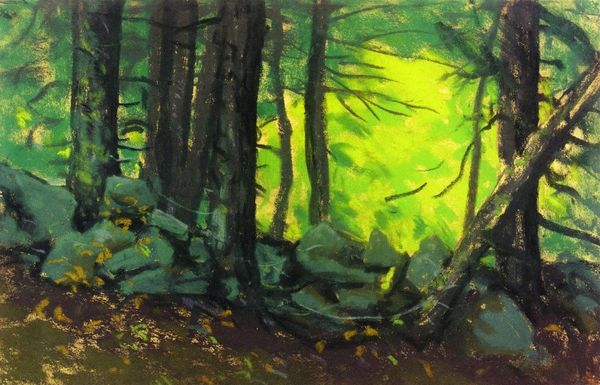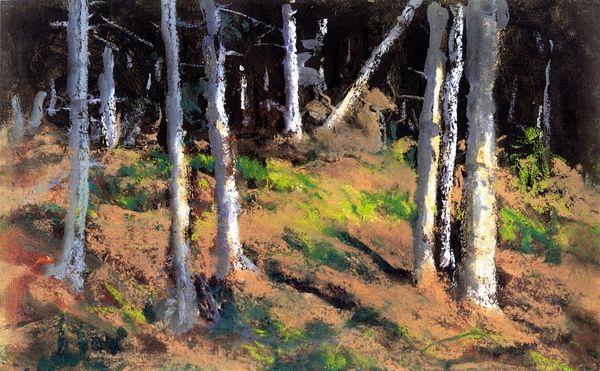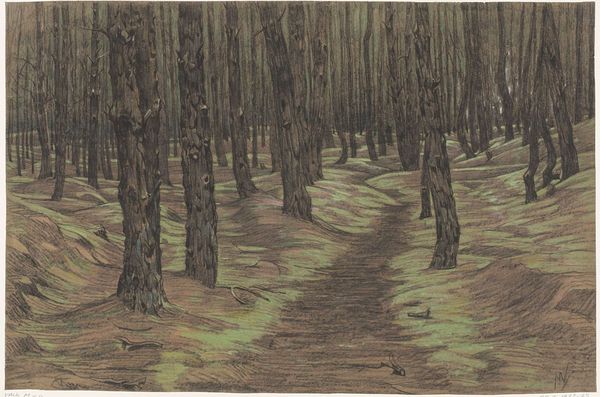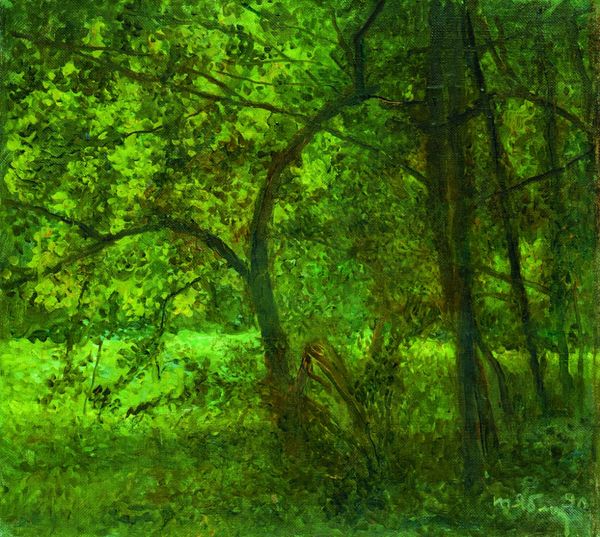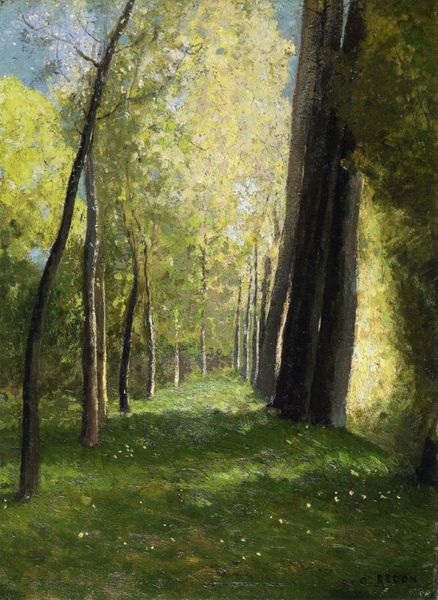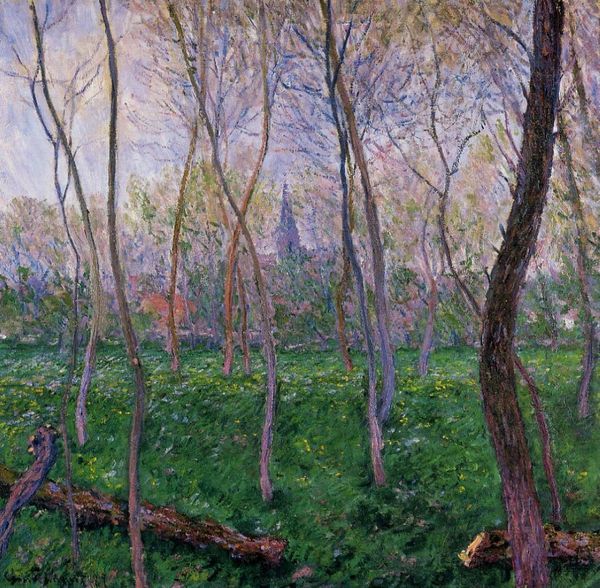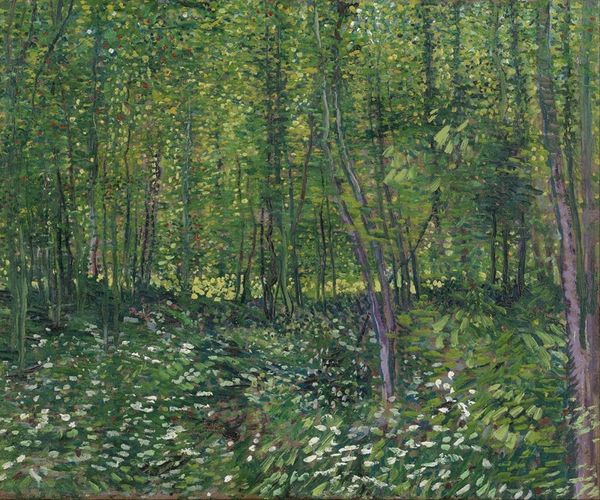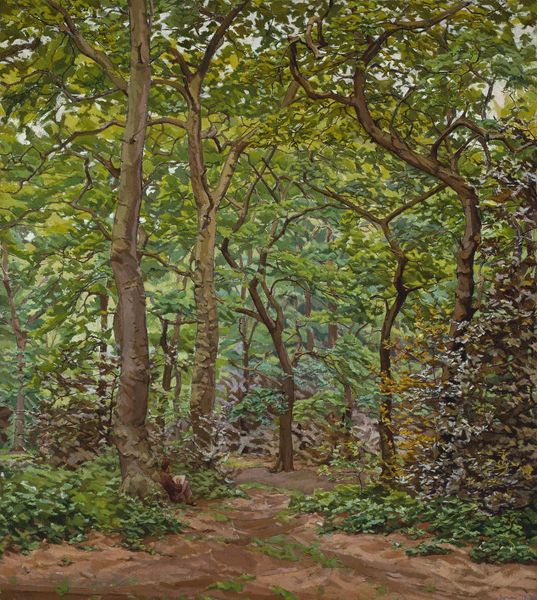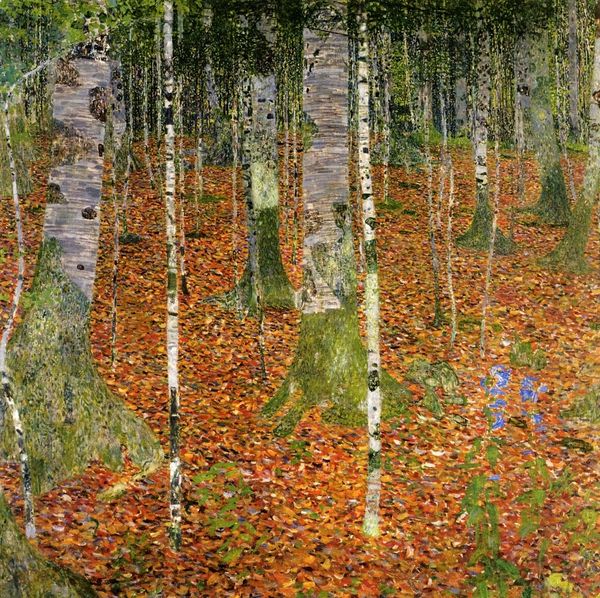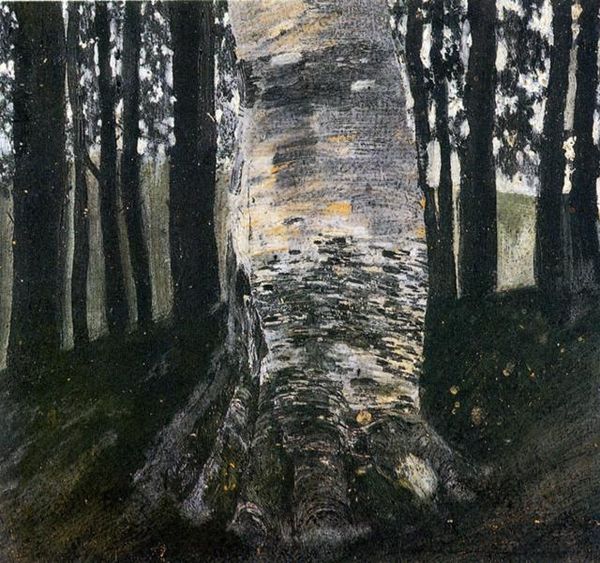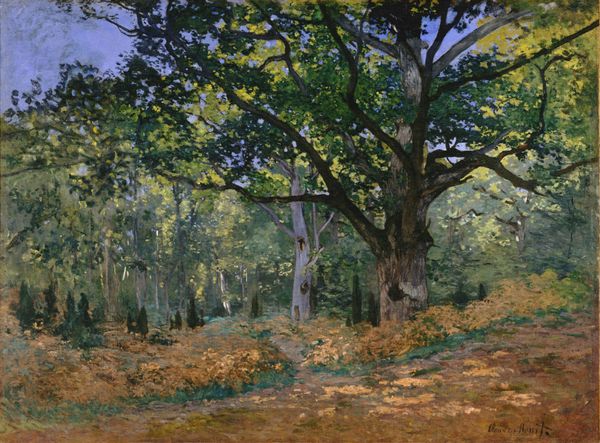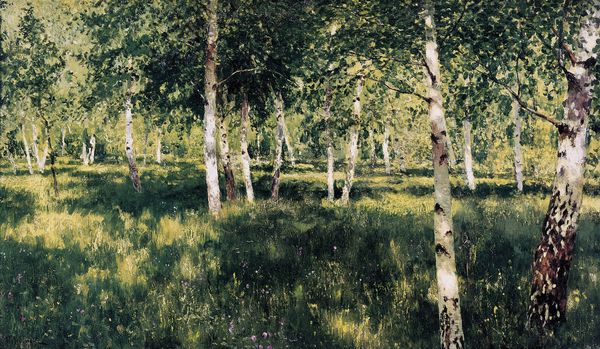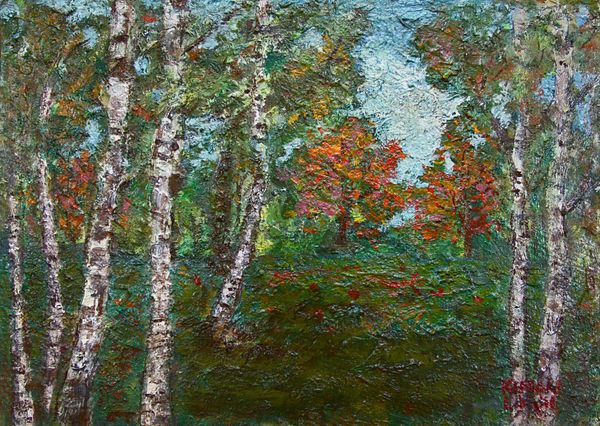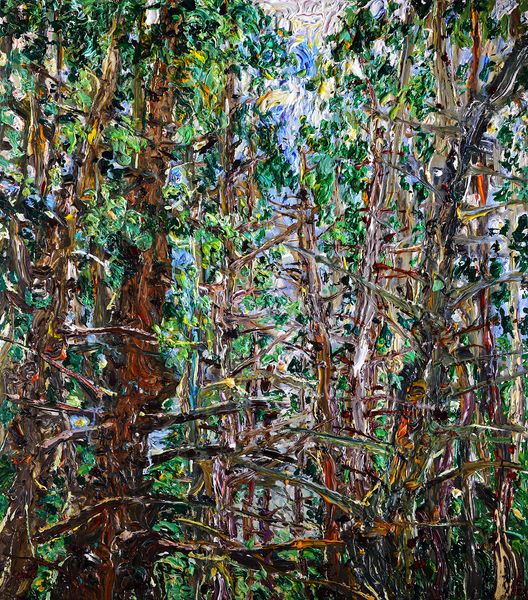
Copyright: Neil Welliver,Fair Use
Curator: Neil Welliver's "Old Windfall," painted in 1982, captures the dense wilderness, locating us in Maine's sprawling landscape. Editor: The immediate impression is overwhelming chaos—an almost impenetrable tangle of fallen trees, all rendered in vibrant greens and filtered light. There's a raw, untamed quality. Curator: Welliver, deeply inspired by painters like Courbet, consciously took his easel outside, directly confronting nature through plein-air painting. This resonates profoundly with 19th-century concerns about human's relationship to the natural world, like what we see with Hudson River School. However, Welliver distances himself by pushing scale, with canvases sometimes stretching over eight feet. He forces the viewer to engage on an almost confrontational scale with what can read as an abstract meditation. Editor: You can definitely see that struggle played out in the light and shadow—the contrast isn't just about realism, but a kind of internal emotional mirroring, even with the focus on light and airy summer trees. The trees are both individual entities, clearly and painstakingly painted, and a representation of some type of shared fate in nature's cycles. All of them eventually will be overtaken and returned to the forest floor, feeding the ecosystem. Curator: That cycle speaks directly to eco-feminist critiques, which highlight parallels between the exploitation of nature and the oppression of women. What happens to the fallen trees? They’re not merely decaying but contributing, sustaining new life in a system that benefits some as others crumble. Are all equal in nature? And how is that linked to human power structures? The work seems deceptively apolitical, until we situate it in those debates about resources. Editor: Precisely. Even the title, "Old Windfall," takes on layers. We have literal fallen lumber and lucky happenstance coexisting in language itself. What does it mean when the wild serves our gain? It makes the beautiful surface complicated. Curator: Yes. Welliver gives us an ostensibly beautiful, light-drenched scene. But through an intersectional reading, one unearths tensions. What does a male painter choosing to present this specifically reveal about his relationship with a tradition like the Hudson River School and the natural world they constructed as inherently feminized and ripe for conquest? Editor: Considering our current climate crisis, looking at Welliver, you get the distinct impression that it’s more crucial than ever to interpret visual culture in terms of our shared humanity. Curator: Definitely. We should resist looking away from our discomfort and turn, instead, towards these reflections to understand complex human-Earth entanglements.
Comments
No comments
Be the first to comment and join the conversation on the ultimate creative platform.
